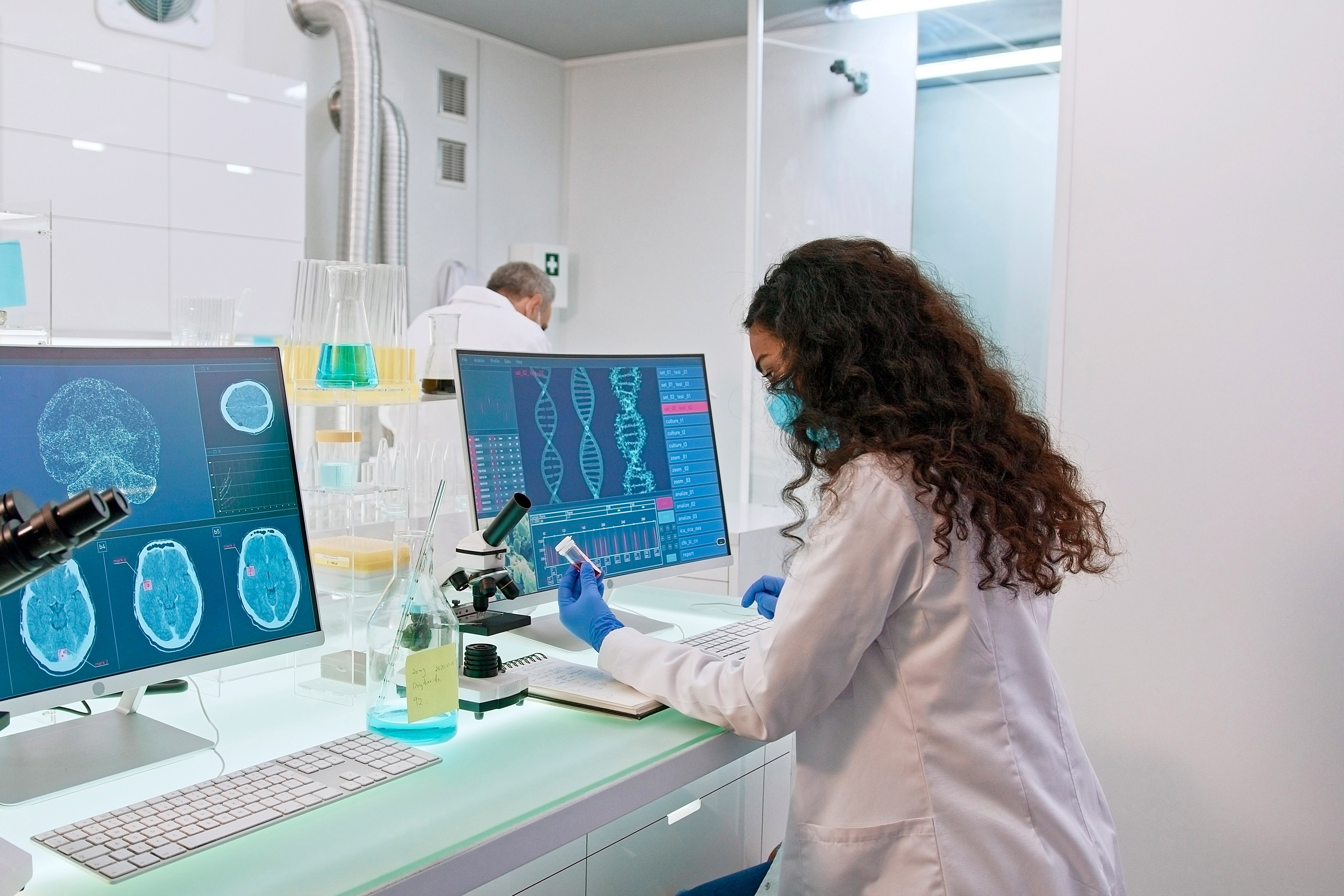EY refers to the global organization, and may refer to one or more, of the member firms of Ernst & Young Global Limited, each of which is a separate legal entity. Ernst & Young Global Limited, a UK company limited by guarantee, does not provide services to clients.

The new EU Medical Device Regulation (MDR) creates significant regulatory challenges for drug-device combination (DDC) product manufacturers.
In brief
- The requirements that combination product manufacturers must fulfill to go to market have undergone significant change with new regulatory processes.
- Understanding how to navigate these regulatory challenges gives drugs developers a better chance of success.
Under the EU Medical Device Regulation (MDR), the approval process for manufacturers of integral combination products has changed. Manufacturers now must obtain an opinion from a designated notified body affirming the conformity of the device constituent part to the relevant general safety and performance requirements. This opinion will need to be included within the Marketing Authorisation Application submission – becoming a critical part of the approval pathway.
Obtaining a Notified Body Opinion (NBOp) will require a significant investment of time and resources. If not addressed correctly, the process may directly impact the costs and time to approval.
The key DDC requirements, a general overview of the drug device-related activities and associated regulatory interactions are summarized here.
In this report, we address the main challenges that combination product manufacturers may face when seeking regulatory approval for their integral combination product.
Purpose of an NBOp for your drug-device combination product
For integral drug-device combination products DDCs regulated as a medicinal product, the MDR has introduced the applicable Article 117. Under this article, manufacturers of integral DDCs must European Conformity mark (CE mark) the device constituent part of their DDC and include the relevant documentation in their marketing authorization dossier.
If the device constituent part does not have a CE mark, the manufacturer must provide an opinion of the conformity of the device part with the relevant general safety and performance requirements (GSPRs) issued by a designated notified body.
Manufacturers must ensure they have identified all the relevant and applicable GSPRs for their combination product and have a sufficient level of evidence to demonstrate that the requirements have been met.
It is important to note then when identifying the applicable GSPRs, the focus should not only be on the device part but also on that part’s interoperability and compatibility with other devices, products or substances.
Inclusions in your NBOp submission
A full technical file is not required for an NBOp, but a significant amount of documentation will still need to be prepared.
The NBOp submission file should contain the following:
- A general description of the device part, including its intended purpose, intended users, intended patient population and the medical condition(s) to be diagnosed, treated or monitored
- Any contra-indications and warnings for the integral DDC
- The principles of operation for the device part and its mode of action
- A description of the accessories for a device part and other devices and products that are not devices that are intended to be used in combination with it
- A general description of the device part’s key functional elements
- A description of the raw materials incorporated into the device part’s key functional elements and those making either direct contact with the human body or indirect contact with the body
- Technical specifications, such as features, dimensions and performance attributes, of the device part and any variants/configurations and accessories that would typically appear in the product specification
- The instructions for use, product insert and packaging insert for the integral DDC
- A GSPR checklist identifying all the requirements that apply to the device part and an explanation as to why others do not apply
- A summary of method(s) used to demonstrate conformity with each applicable GSPR and a summary of the results demonstrating the conformity
- Details on the method(s) adopted to meet the applicable GSPR (e.g., raw data, original test reports), including a justification, verification and validation of the method(s) adopted to meet the applicable GSPR
- The identification of the harmonized standards, common specifications or other solutions applied to meet the applicable requirements
- The precise identity of the controlled documents offering evidence of conformity
In many circumstances, integral DDC legal manufacturers use suppliers or subcontractors to design, develop and manufacture the device constituent part.
It is imperative to have contractual agreements and robust supplier management processes in place that clearly define data sharing arrangements, roles and responsibilities and timelines between both parties for developing the NBOp submission.
In cases where your supplier or subcontractor is unwilling to share the necessary technical data directly with you, you may be able to agree with both your Notified Body (NB) and supplier to allow your supplier to share the data directly with the NB.
When to submit a new or updated NBOp
If you make a substantial change to your product that could affect the performance and safety characteristics of the device part or the intended use of the device, consider when Marketing Authorisation Application (MAA) variation would be required and when NBOp would need to support the change and maintain registered information (i.e. notification vs. prior approval/Type II).
NBOp submissions can require a significant amount of time and resources to prepare. Therefore, we recommend manufacturers consider the following activities to make the process more efficient:
- Map out all planned and upcoming changes to the device constituent parts for your integral DDCs to know when the change is expected to occur
- For each change, assess whether the change would be considered significant or substantial and necessitate an NBOp
- If you use a supplier for the device constituent part of your integral DDC, you should make sure that you have contractual agreements in place to ensure an appropriate level of communication and action regarding changes to the device
Considerations while selecting a Notified Body to issue your NBOp
The introduction of the MDR brought about more stringent requirements for NBs to meet to get their designation. As a result, the number of NBs designated for medical device certification has significantly reduced.
When selecting a NB to issue an NBOp, consider several factors:
- Is the NB designated to provide services for your device class?
- Does the NB have experience with providing NBOps?
- Do you have existing relationships with the NB?
- How much is the NB charging to provide the NBOp, and is it within your budget?
- What are the NBs’ proposed timelines for the NBOp process?
Device-related information to be included within your MAA
The content of the MAA should be as described in Notice to Applicants v2b. The device-related information requirements have been recently clarified and should be further aligned with the European Medicines Agency (EMA) Guideline on Quality Documentation for Medicinal Products when used with a Medical Device (July 2021).
- Manufacturing Process: The manufacturing process for medicinal products should be in accordance with GMP and described in sufficient detail within the MAA.
- Controls: Suitable specifications for the finished product DDC should be defined. These should include essential performance requirements, and the acceptance criteria should be assigned based on industry standards, available release and stability data, experience and the target population.
- Validation: Evidence that the manufacturing process is robust and capable of consistently manufacturing the DDC to the required quality should be included in the MAA.
- Stability: Sufficient data to support shipment parameters, shelf-life assignment and in-use procedures of the DDC should be described within the MAA.
Key vigilance considerations for your drug-device combination product
For integral DDCs regulated as a medicinal product, the device vigilance requirements of the MDR are not applicable but is recommended that integral DDC manufacturer has the technical knowledge and processes built into their Quality Management System (QMS) for handling, evaluating and investigating, where necessary, all device-related complaints.
It will also be important for integral DDC manufacturers to review their pharmacovigilance agreements with suppliers to ensure that they take into consideration additional data that may need to be collected and communicated, such as device malfunctions and device-related events.
Labelling and Unique Device Identification (UDI) requirements for your drug-device combination product
For integral DDCs regulated as medicinal products, the labeling and UDI requirements of the MDR are not applicable. Therefore, a device-part-related UDI should not be applied to the packaging or labeling of the integral DDC. With regards to labeling, the integral DDC manufacturer should follow the labeling requirements for a medicinal product.
Key lifecycle management considerations of your drug-device combination product
Changes to an approved DDC are categorized based on risk to public health and the impact on the medicinal product’s quality, safety and efficacy. Changes to the content of the MAA are made in accordance with Commission Regulation (EU) No 1234/2008 (the 'Variations Regulation').
According to Article 52(9) MDR, as clarified by MDCG Guidance 2020–12, NBs are required to request a consultation with a Competent Authority as part of the conformity assessment under the MDR for ancillary medicinal substances already consulted under the Medical Device Directive 93/42/EEC.
It is possible to take the opportunity of an upcoming variation to request an opinion in accordance with the MDR.
Summary
Understanding the common pitfalls that manufacturers are facing will help you to better prepare and increase the likelihood of obtaining your NBOp in a smooth, timely and cost-efficient manner.
Related articles
Five trends redefining the health sciences and wellness operating model
As demand from consumers accelerates the adoption of new technologies, we explore how companies can provide a more convenient health experience.
Why genome editing technologies are creating buzz in medicine
Technologies that allow genomic alteration are gaining in popularity, but they’ll need to overcome key hurdles to become mainstream. Learn more.
How EY can help
-
The EY Smart Reviewer can help your business accelerate and optimize the review and approval process for marketing and promotional materials. Find out how.
Read more





